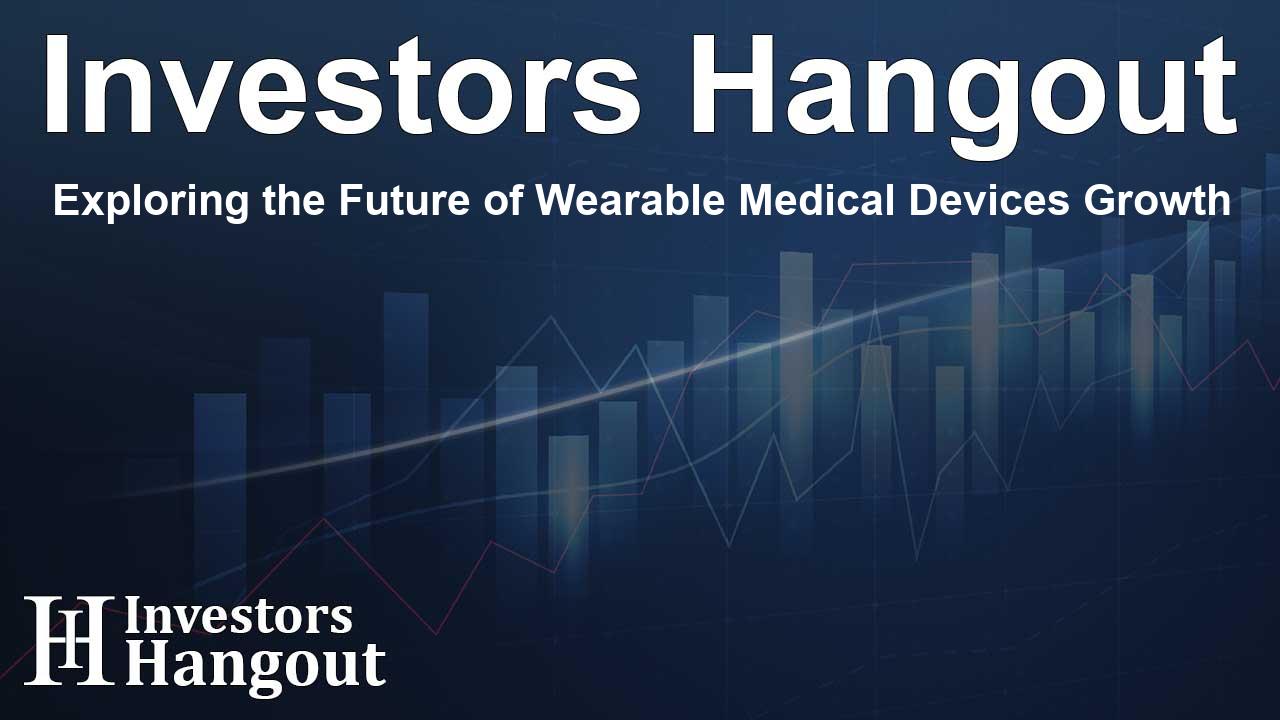Exploring the Future of Wearable Medical Devices Growth

Introduction to the Wearable Medical Devices Market
The wearable medical devices market is on the verge of significant growth, anticipated to expand from USD 57.56 billion to USD 499.2 billion by 2035. This striking increase, at a compound annual growth rate (CAGR) of 21.6%, illustrates the importance of wearables in health management. As more individuals embrace remote medical monitoring, chronic disease management, and predictive healthcare, these devices are transforming the landscape of healthcare delivery.
Impact of Technology on Healthcare Delivery
In the coming years, the integration of advanced technologies will reshape healthcare delivery. Hospitals, homecare providers, and medical technology (medtech) innovators are increasingly adopting AI-powered wearables and IoT-enabled sensors. These systems provide constant patient monitoring, allowing healthcare professionals to gain real-time insights. With data readily available, tailored interventions can be applied, thus reducing hospital readmissions and enhancing overall operational efficiency.
Why Should Business Leaders Care?
There are several compelling reasons why the wearable medical devices market is vital for business leaders in healthcare:
- Digital Health Transformation: Advanced technologies such as AI and cloud-based analytics are revolutionizing patient care processes.
- Chronic Disease Management: The rising number of adults with chronic conditions like diabetes and heart disease drives the demand for wearables.
- Aging Population: The increasing number of elderly individuals necessitates continuous health monitoring to facilitate early diagnosis and prevent falls.
- Operational Improvements: Wearables provide hospitals with actionable data, which can reduce costs and enhance patient outcomes.
- Global Market Expansion: Emerging regions like Asia-Pacific and Latin America present abundant opportunities for growth, fueled by increasing healthcare investments.
Opportunities for CXOs in the Wearable Market
Business leaders should consider the following strategic opportunities:
- Invest in AI-enhanced wearable solutions for proactive healthcare approaches.
- Collaborate with biosensor companies to design multi-functional wearable devices.
- Expand operations in high-potential Asia-Pacific markets through partnerships with local healthcare providers.
- Explore new business models such as subscription services for remote monitoring.
- Work with insurers to incorporate wearable technology into preventative care strategies.
Insights from Industry Experts
Industry leaders recognize the critical role of wearable medical devices in modern healthcare. According to Neha Rathod Godbole, a prominent figure in market research, "Wearable medical devices are becoming essential for preventive healthcare strategies. By utilizing AI and IoT, healthcare providers can substantially cut down hospital admissions while delivering better patient outcomes."
Challenges Facing the Wearable Medical Device Market
Despite the promising prospects, several obstacles need addressing to fully leverage the wearable medical devices market:
- High costs associated with devices and limited insurance coverage in several regions.
- Concerns regarding data privacy and cybersecurity must be heightened to gain consumer trust.
- Healthcare providers need adequate training to integrate wearables into their practices effectively.
- Interoperability among various technology platforms remains a concern.
Regulatory Considerations
Wearable devices face strict regulations. For instance, the FDA categorizes many of these devices as Class II or Class III, requiring compliance with rigorous standards. The regulatory landscape can pose challenges, yet they also ensure safety and efficacy in medical products.
The Future of Wearable Medical Devices
The wearable medical devices market is fueled by several factors. Chronic disease prevalence, the need for remote monitoring, and the adoption of AI technologies are driving the market forward. Aging populations worldwide are particularly influencing the demand for these continuously connected health solutions.
Conclusion
The combination of technological advancements and shifting demographic trends is paving the way for the wearable medical devices market. By understanding the trends and strategically investing in innovation, healthcare leaders can significantly enhance patient care and operational efficiencies.
Frequently Asked Questions
What is the projected growth of the wearable medical devices market?
The wearable medical devices market is expected to grow from USD 57.56 billion to USD 499.2 billion by 2035, with a CAGR of 21.6%.
Why are wearables important for chronic disease management?
Wearables enable continuous monitoring of vital signs, aiding in early detection and management of chronic diseases like diabetes and cardiovascular issues.
What challenges does the wearable medical device industry face?
Challenges include high device costs, insurance coverage limitations, cybersecurity concerns, and integration difficulties within healthcare systems.
How do regulations impact wearable medical devices?
Regulatory requirements ensure the safety and effectiveness of wearable devices, but compliance can pose challenges for manufacturers.
What trends will shape the future of wearable medical devices?
Key trends include advancements in AI and IoT, increased aging populations, and growing telehealth services, all driving demand for wearables.
About The Author
Contact Dominic Sanders privately here. Or send an email with ATTN: Dominic Sanders as the subject to contact@investorshangout.com.
About Investors Hangout
Investors Hangout is a leading online stock forum for financial discussion and learning, offering a wide range of free tools and resources. It draws in traders of all levels, who exchange market knowledge, investigate trading tactics, and keep an eye on industry developments in real time. Featuring financial articles, stock message boards, quotes, charts, company profiles, and live news updates. Through cooperative learning and a wealth of informational resources, it helps users from novices creating their first portfolios to experts honing their techniques. Join Investors Hangout today: https://investorshangout.com/
The content of this article is based on factual, publicly available information and does not represent legal, financial, or investment advice. Investors Hangout does not offer financial advice, and the author is not a licensed financial advisor. Consult a qualified advisor before making any financial or investment decisions based on this article. This article should not be considered advice to purchase, sell, or hold any securities or other investments. If any of the material provided here is inaccurate, please contact us for corrections.
